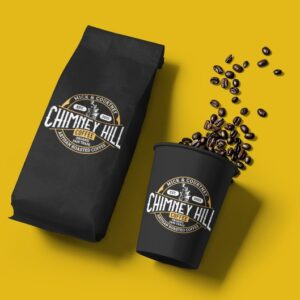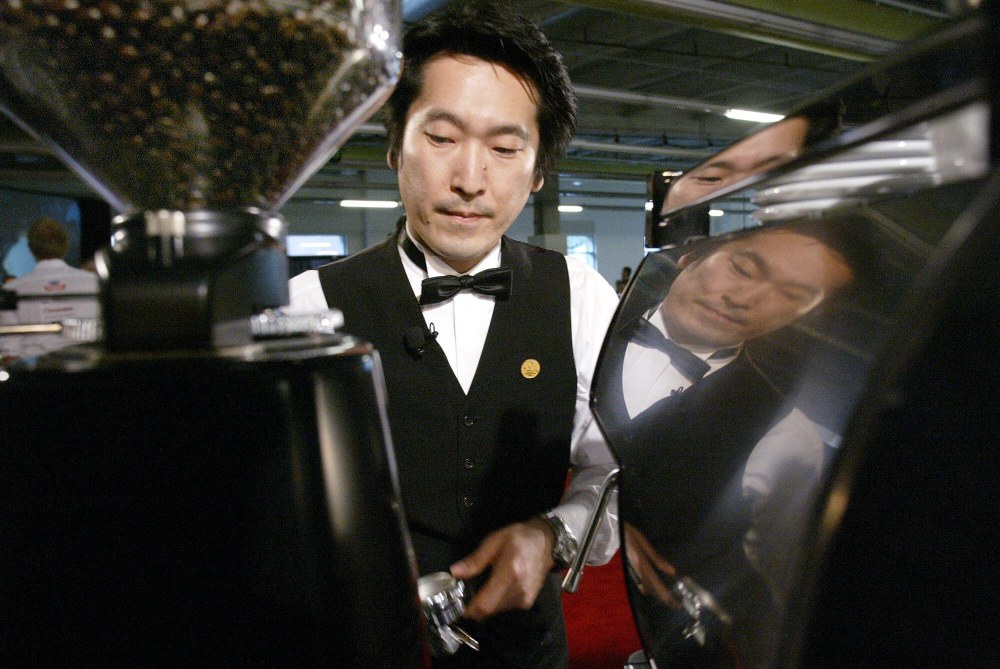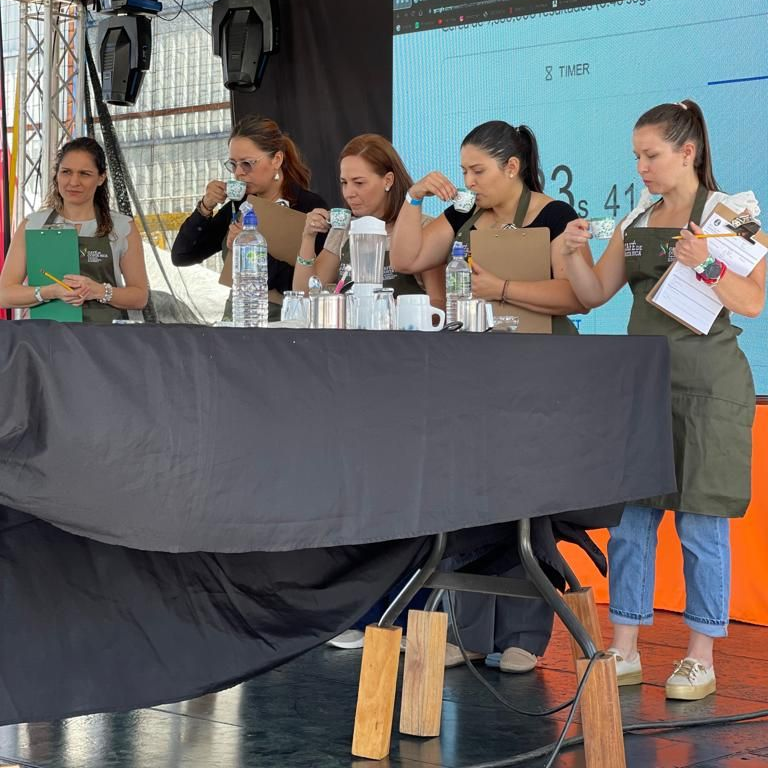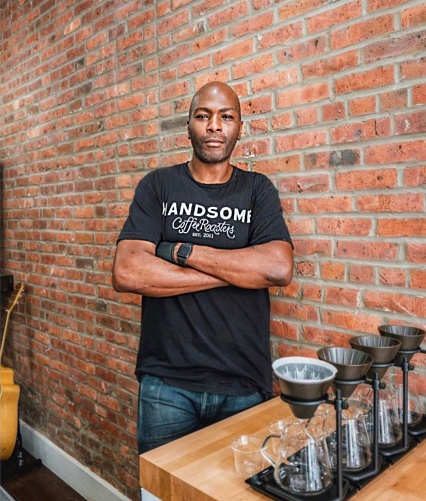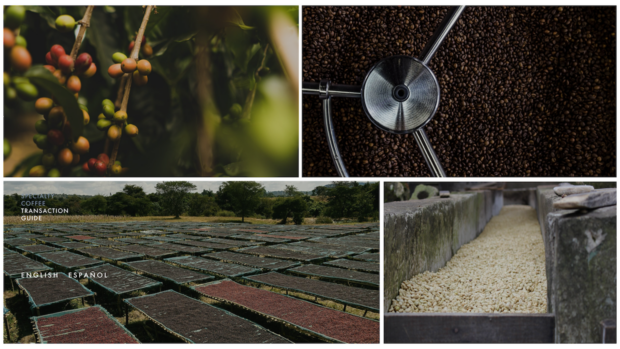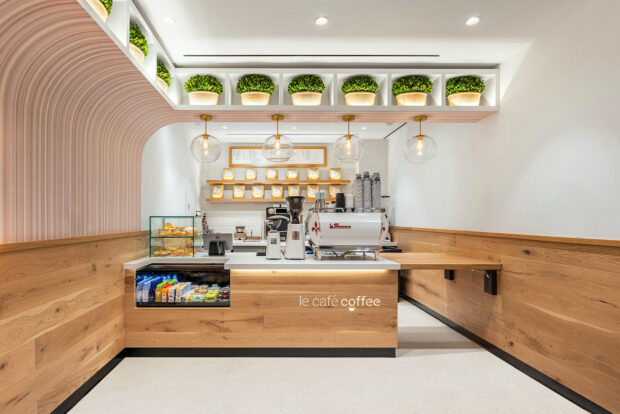The most affordable Keurig coffee maker is available exclusively at Walmart and comes at a sweet price of only $59.00. In this article, you’ll find out how good it really is, and also find additional information like how to clean it, or do you need a water...
Bypass coffee brewing: How can it improve extraction?
-

Chimney Hill Coffee
Price range: $18.99 through $79.99 -

Chimney Hill Coffee Men’s Fitted V-Neck Short Sleeve Tee
Price range: $20.31 through $21.50 -

Chimney Hill Coffee Women’s Favorite Tee
Price range: $14.54 through $16.66 -

Chimney Hill Coffee Unisex Jersey Long Sleeve Tee
Price range: $19.49 through $29.11
Bypass coffee brewing: How can it improve extraction?
Bypass coffee brewing: How can it improve extraction?
Bypass coffee brewing: How can it improve extraction?
Bypass coffee brewing: How can it improve extraction?
Bypass coffee brewing: How can it improve extraction?
Here’s How to Change Keurig 2.0 Water Filter Easily
Not sure how to change Keurig 2.0 water filter? Here are step-by-step instructions that will help you do it quickly and easily. Keurig water filter should be changed every 2 months or 60 tank refills. The water filter is located inside the water tank, on the valve at...
Quick French Press Iced Coffee (No, It’s Not Cold Brew)
This is the absolute fastest way to make French press iced coffee. Just forget about cold brew concentrate – with this Quick French Press Iced Coffee Recipe you can have your iced coffee ready in 5 – 6 minutes. Who doesn’t like the French press?! It’s...
The coffee rose for assessing Anaerobic coffee
I just came across this really neat tool to assess anaerobic coffees. I haven't used it for cupping yet. I'm not sure I will like it either because the idea of lowering the score of the coffee just because it tastes has some thyme flavors. At the same time I...
Three US Coffee Championship Events Are Heading To Rancho Cucamonga
This article is from the coffee website Sprudge at http://sprudge.com. This is the RSS feed version. The 2024 US Barista Championship, Brewers Cup, and Cup Tasters will take place March 15-17 at Klatch Coffee Roasters in Rancho Cucamonga, California.
The Origin Story of Turtle Island Coffee in Vancouver, B.C.
A new Indigenous-owned coffee company based in Vancouver, British Columbia, called Turtle Island Coffee has launched with the goal of exposing more people to high quality specialty coffee and Indigenous...
Get Ready for The Barista League’s 2024 Season
The Barista League has announced 12 competitions across four continents. BY J. MARIE CARLANBARISTA MAGAZINE ONLINE Photos courtesy of The Barista League When The Barista…
Get Ready for The Barista League’s 2024 Season
The Barista League has announced 12 competitions across four continents. BY J. MARIE CARLANBARISTA MAGAZINE ONLINE Photos courtesy of The Barista League When The Barista…
Get Ready for The Barista League’s 2024 Season
The Barista League has announced 12 competitions across four continents. BY J. MARIE CARLANBARISTA MAGAZINE ONLINE Photos courtesy of The Barista League When The Barista League announces new events, it’s worth paying attention! This year, the schedule will be...
Weekly Coffee News: EUDR and Africa + More Celebrity Coffee
Welcome to DCN’s Weekly Coffee News. Keep up with all the latest coffee industry stories and career opportunities by subscribing to DCN’s newsletter. Tell our editors about your news here. Report: Small-Scale Farmers in...
Do Higher Coffee Prices Mean More Money For Farmers? A Story From Sumatra Shows It’s Complicated
This article is from the coffee website Sprudge at http://sprudge.com. This is the RSS feed version. Since coffee costs more now than ever, do those coffee prices impact the amount of money earned by coffee farmers?
Coffee News Recap, 2 Feb: Applications open for Australia’s Richest Barista 2024, De’Longhi reports 4.6% revenue increase after La Marzocco move & other stories
Every Friday, Perfect Daily Grind rounds up the top coffee industry news from the previous week. Here are this week’s coffee news stories. The word of the week is: expansion. Mon, 29 Jan AeroPress launches limited-edition Clear Pink brewer. The coffee brewer is made...
Watch The 8 Best Coffee Videos Vying For Sprudgie Awards
This article is from the coffee website Sprudge at http://sprudge.com. This is the RSS feed version. The best coffee videos from 2023 featuring Cafe Imports, Aramse, Nguyen Coffee Supply, Wildly, Mirror Coffee Roasters, Alto Stories, Quek Shio, and Cafe Retiro.
Robusta is great and has untapped potential
I live in the US and my typical choice of coffee is lightly roasted Ethiopian pour overs. I generally love acidity and fruit flavors in my coffee. My experience with Robusta has often been poor. Very dark, roasty and maybe chocolatey. I participated in the Hoffman...
Design Details: Brewing Reinvented at ULA Café in Melbourne
Welcome to Design Details, an ongoing editorial feature in Daily Coffee News focused on individual examples of coffee shop architecture, interior design, packaging design or branding. If you are a coffee...
Robert Downey Jr.’s New “Happy Coffee” Is Really Depressing
This article is from the coffee website Sprudge at http://sprudge.com. This is the RSS feed version. Robert Downey Jr. and Craig Dubitsky team up for Happy Coffee.
Out Now: The February + March 2024 Issue of Barista Magazine!
In our new issue we feature Lisa Lawson from Glasgow, Scotland, take a look at the newest grinders, explore spring drink inspiration, see how more women are getting involved in coffee tech, and much more! BY SARAH ALLENBARISTA MAGAZINE We’re stoked to announce the...
The coffee industry’s biggest competition: The story of the World Barista Championship
Every year, the global coffee industry gears up for one of its most exciting and groundbreaking competitions: the World Barista Championship. For more than two decades, the WBC has been one of the biggest catalysts for change and innovation in specialty coffee, and...
The 2023 Specialty Coffee Transaction Guide Has Landed
The 2023 edition of the Specialty Coffee Transaction Guide (SCTG) guide went live today, providing actors throughout the coffee chain a data-driven tool for green coffee price discovery. The full...
Espro great until I needed replacement filter ☹️
I've had an Espro P7 for nearly four years after seeing glowing praise on this sub (to which I later contributed). Before I bought the P7 I looked at the replacement parts available and they seemed like a solid company in that they sold e.g. replacement filters...
New Bill Requires More Kona In Your Kona Coffee
This article is from the coffee website Sprudge at http://sprudge.com. This is the RSS feed version. Currently a coffee only need to be 10% Kona to be labeled as such.
What’s the best and worst part about owning and running a coffee shop?
I'm not interested in getting into it myself, as I have no experience in the service industry, no real appetite for risk and no desire to run a business in general. But sometimes I think about it and I wonder what's the most enjoyable thing about it and...
minimum dose size?
I use the Hario switch to brew my coffee and am trying to reduce my caffeine consumption. Hence I would like to brew smaller cups of coffee. I am currently using 10g of coffee with 160g of water. (1:16 Ratio) I am wondering if there is a minimum amount of coffee...
[CAFE OWNERS] Background before starting a shop?
I’ve worked in coffee for 6 yrs as a barista and shift supervisor and have passion for it. I’ve decided that I want to open my own place in the future and so I’ve been doing the research to make a business plan. Lately, however, I’ve begun to realize just how many...
Bypass coffee brewing: How can it improve extraction?
There is a lot of science to brewing coffee. Whether knowingly or unknowingly, we trigger – and try to control – an almost endless number of chemical reactions to achieve the perfect extraction.
To do so, we have to tweak different variables – such as grind size, temperature, and coffee-to-water ratio – to get the best results. And while most of these adjustments take place before or during the brewing process, some coffee professionals choose to make them after they have extracted their coffee.
Bypass brewing is one of the most prominent examples. This involves intentionally brewing a more concentrated batch of coffee, which is then diluted with water. In turn, you can change a coffee’s sensory profile – creating new flavours and mouthfeel.
There are, however, no set or formal standards for intentional bypass brewing. So is there a “right” way to do it?
To find out, I spoke to Mithilesh Vazalwar, the 2022 Indian Barista Champion, and Ben Jones, the 2016 US AeroPress Champion.
You may also like our article exploring the future of pour over coffee.

What is bypass brewing and how does it work?
Quite simply, bypass brewing is when water is added to coffee after it has been extracted – thereby avoiding any contact with ground coffee. In some ways, it’s no different to diluting coffee concentrate, for example.
As well as winning the 2016 US AeroPress Championship, Ben Jones is a former coffee trainer and consultant. He tells me that the bypass method most likely originated as a function on certain automated batch brewer brands.
“The bypass feature [of these machines] intentionally sends water around the filter so it doesn’t come into contact with ground coffee, so it bypasses the brew bed,” he says. “This allows you to brew large batches of coffee without overflowing the basket, overextracting the coffee, or relying on absurdly long brew times.”
Another comparison with bypass brewing is adding an ice cube to a glass of whisky or scotch. Instead of watering down the liquor, the small amount of water helps to highlight or change certain flavours.
“It can be used to increase the volume of coffee, but with practice, you can manipulate flavour and texture,” Ben adds.
Some bypass brewing, however, can be unintentional – meaning the results aren’t always desirable.
“This is when you make a mistake with your pouring technique, or there is a design flaw with the brewer you’re using,” Ben explains. “In turn, it leads to inconsistencies.”

Popularity at competitions
Bypass brewing is a popular practice at competitions – particularly AeroPress Championships.
“Using a higher dose and the same amount of water means you can extract enough of the desirable flavour compounds while also reducing the risk of overextracting,” Ben tells me.
For some competitors, bypass brewing can rescue “bad” brews. In addition to being the 2022 Indian Barista Champion, Mithilesh Vazalwar is the 2017 Indian AeroPress Champion and the CEO of Corridor Seven Coffee Roasters.
“You can control multiple variables using bypass brewing,” he says. “I have been using bypass brewing for a while now and it helps me to accentuate or minimise certain flavours. Bypass helps you to curb more bitter and overly acidic characteristics, which helps to make the final cup profile more rounded and softer.”
Mithilesh goes on to explain that the bypass method was a crucial part of his winning 2017 AeroPress routine.
“I was given a dark roasted coffee,” he tells me. “I made a concentrated brew and then bypassed it with about 60ml of cold water. This reduced the perceived bitterness and lifted out tiny amounts of sweetness.”

Is there a “right” way to bypass?
There is no single way to carry out the bypass method. As with any other brewing method, it’s subjective and largely comes down to personal preference.
“Ultimately, if you like what you brewed then you did it right,” Ben says. “Generally, when preparing a single serving of coffee with the bypass method, people brew using 60% to 80% of the total water weight and then add the remaining water after extraction is complete.”
Balancing extraction levels
Ben emphasises that most people prefer the level of total dissolved solids in their filter coffee to be between 1.15% and 1.35%. As a result, he says it’s possible to extract “too much flavour”.
“When we add water, we spread a little less flavour across our taste receptors, allowing us to perceive it with more clarity,” he adds. “It’s like when music is too loud – it’s hard to hear, so turning it down a little helps.”
Avoiding too much or too little bypass
As previously stated, unintentional bypassing is not ideal, but it can be easily avoided.
For example, when preparing pour over coffee, you should avoid pouring water directly onto the filter or along the edge of the slurry (where it’s more likely to move past the grounds rather than through them).
“The best way to prevent too much or too little bypass is to practise attentive tasting,” Ben suggests. “Then, when your coffee tastes great, you can repeat your process.”
Meanwhile, Mithilesh uses a simple bypass ratio: for every gram of coffee he uses, he adds two grams of bypass water.
“So if I use 20g of coffee, I will bypass 40ml of water,” he says. “However, it’s also about finding balance and what works for you. I recommend brewers and baristas to start with bypassing 10ml of water and then tasting the results. You can then add another 10ml and keep adding more until you find your ‘sweet’ spot.”

Beyond the AeroPress
In his opinion, Ben says the AeroPress is the best brewer for the bypass method – largely thanks to its inherent simplicity.
“There are less uncontrollable variables with the AeroPress,” he notes. “But with any well-prepared coffee, adding a little extra water can be helpful, regardless of the brew method.”
However, he mentions that manual pour over brewers are more susceptible to unintentional bypass, such as the Hario V60 and the Chemex.
“The Kalita Wave and similar brewers can be less problematic when it comes to bypassing,” he adds. “Yes, it’s likely there will be some bypass if you pour on the edge of the ridges, but you can control your technique more.”
Ultimately, it can depend on how deep the coffee bed is when using a certain brewer. If the bed is too deep, it’s arguably better to intentionally bypass water than to grind coarse enough to allow all of the water to pass through the ground coffee within the total extraction time. Otherwise, your coffee may taste sour and lack sweetness.
The emergence of no-bypass brewers
Given that unintentional bypass brewing results in a number of problems, there has been recent growing interest in no-bypass brewers.
As the name suggests, these are brewing devices that force all of the water to pass through the coffee bed. Some examples are:
- The NextLevel Pulsar, developed by researcher Jonathan Gagné
- Jonathan also coined the term “no-bypass brewing”
- Weber Workshops’ the BIRD, which was launched in December 2023
- The Tricolate, which promises higher extraction levels

Intentional bypass brewing is purely a matter of preference. For many baristas, competitors, and home brewers, it’s one of many ways to improve the overall coffee experience.
When it comes to the bypass method, however, sometimes less is more. As Mithilesh and Ben both suggest, start with smaller amounts of water and continuously taste your coffee to get the best results.
Enjoyed this? Then read our article on how to brew coffee with the Origami.
Photo credits: Mithilesh Vazalwar
Perfect Daily Grind
Want to read more articles like this? Sign up for our newsletter!
The post Bypass coffee brewing: How can it improve extraction? appeared first on Perfect Daily Grind.

